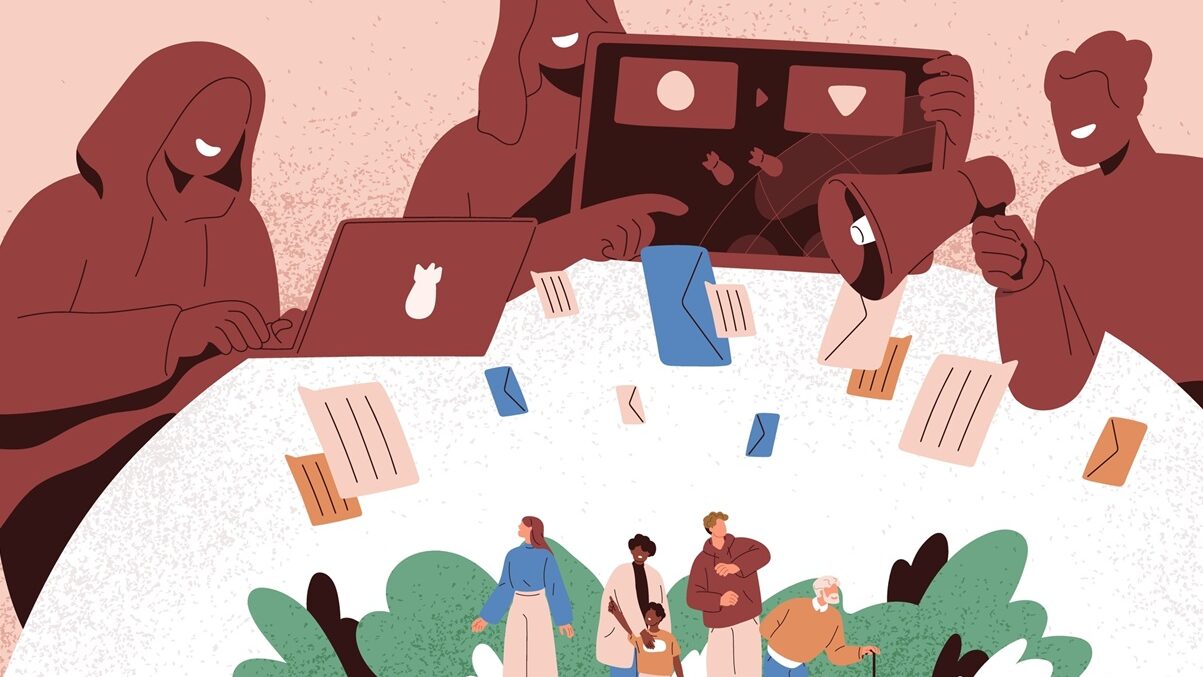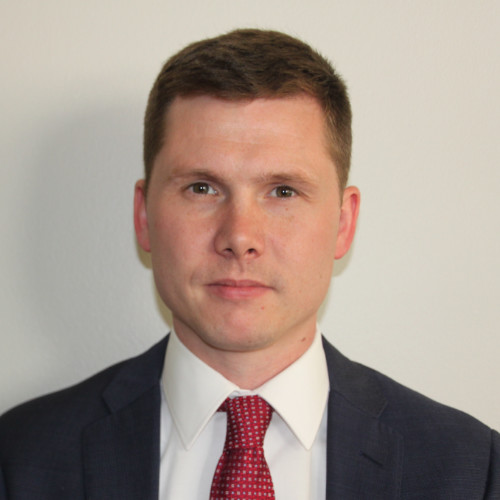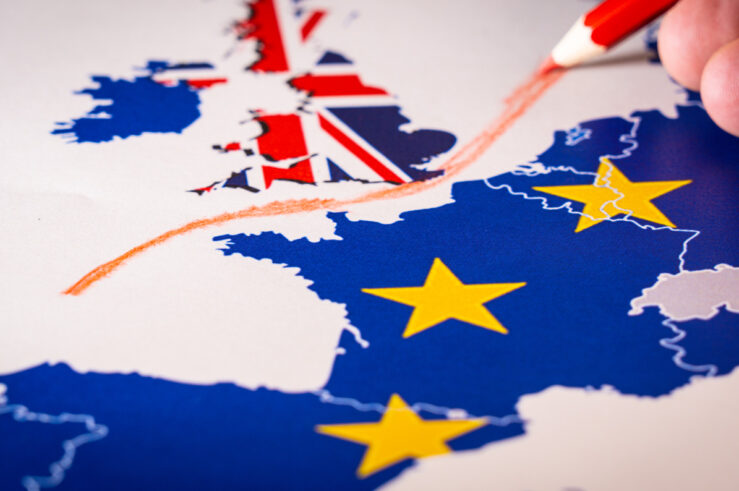
With Monday’s oral arguments in Murthy v. Missouri, we now have more of a feel for how the U.S. Supreme Court appears to be considering the issues of social-media censorship—in this case, done allegedly at the behest of federal officials.
In the International Center for Law & Economics’ (ICLE) amicus brief in the case, we argued that the First Amendment protects a marketplace of ideas, and government agents can’t intervene in that marketplace by coercing social-media companies into removing disfavored speech. But if the oral arguments are any indication, there are reasons to be skeptical that the Court will uphold the preliminary injunction the district court issued against the government officials (later upheld in a more limited form by the 5th U.S. Circuit Court of Appeals).
While it is certainly difficult to rely on injunctions to police informal government activity, there are potentially catastrophic implications if the Court’s opinion here ultimately serves to erect barriers so high that no one could successfully challenge the kinds of opaque-to-the-public government censorship alleged in this case.
Standing
Much of Monday’s oral argument focused not on determining when government pressure campaigns might overstep the line into coercion, but rather, whether the Court should consider the question at all. Some of the justices’ questions appeared to suggest that, unless a person whose speech was suppressed could allege a specific action by a government official that targeted them individually, they couldn’t even challenge the underlying censorship regime.
For instance, Justice Elana Kagan focused several times on the problem of traceability—i.e., how the government’s conduct caused speech to be suppressed:
JUSTICE KAGAN: Could we go back to the standing question? And – and if I ask you for the single piece of evidence – and maybe this is the – the piece that you were describing earlier. I just wanted to make clear what your answer was. The single piece of evidence that most clearly shows that the government was responsible for one of your clients having material taken down, what is that evidence and, you know, what does it say about how the government was responsible?
AGUIÑAGA: Sure, Your Honor. So, as I say, I think Jill Hines is the best example for us on standing. To give you one more example, look at page —
JUSTICE KAGAN: Yeah, but even on that one, I guess I just didn’t understand in what you were saying how you drew the link to the government. I mean, we know that there’s a lot of government encouragement around here. We also know that there’s – the platforms are actively content moderating, and they’re doing that irrespective of what the government wants. So how do you decide that it’s government action as opposed to platform action?
AGUIÑAGA: Your Honor, I think the clearest way – if I understand – so let me answer your question directly, Your Honor. The way — the link that I was drawing there was a temporal one. If you look at JA 715 to 716, that’s a May 2021 email. Two months later after that email, calls were targeting health groups just like Jill Hines’s group. She experiences the first example of that kind of group being —
JUSTICE KAGAN: Yeah. So, in two months, I mean, a lot of things can happen in two months. So that decision two months later could have been caused by the government’s email, or that government email might have been long since forgotten because, you know, there are a thousand other communications that platform employees have had with each other, that – a thousand other things that platform employees have read in the newspaper. I mean, why would we point to one email two months earlier and say it was that email that made all the difference?
…
JUSTICE KAGAN: I mean, you can say that about pretty much everything that’s in your brief, that there’s just nothing where you can say, okay, the government said take down that communication. The government is making some broad statements about the kinds of communications it thinks harmful. Facebook has a lot of opinions on its own about various kinds of communications it thinks harmful. I guess, if you’re going to use standard ideas about traceability and redressability, I guess what I’m suggesting is I don’t see a single item in your briefs that would satisfy our normal tests.
If the Court decides to avoid the merits of this case under such a lack-of-standing reasoning, it would allow government agents to engage in egregious censorship activity so long as they did a good job of not creating a record of asking for particular individuals’ speech to be suppressed. The government could do this by calling for entire types of content or viewpoints to be censored without targeting specific people.
In fact, this is pretty much what has been alleged: that government officials—often using government-funded nonprofits in partnership with government entities—algorithmically monitored viewpoints deemed inconsistent with the government’s viewpoint and reported those instances to social-media companies for suppression. Alternatively, government officials could use private meetings and phone calls (instead of discoverable emails or other written communications) to threaten intermediaries outright. Such interactions would presumably never be made public unless the intermediaries in question (those being coerced) made it public themselves. This also allegedly happened here with social-media companies prior to the release of the Twitter Files, and when discovery was conducted pursuant to this case.
If the Court vacates the preliminary injunction on traceability grounds, affected individuals in future cases may never know or be able to obtain discovery in order to prove their speech was suppressed due to government action, except where the pressured intermediary lets them know. This would allow covert censorship to continue unabated.
Coercion
Questions from a few of the justices appeared to imply an exceedingly high bar to find state action under a coercion theory. For example, government officials privately berating an entity into suppressing speech on their behalf may not be regarded as coercion, but just an example of persuasion. Public speeches by government officials condemning speech carried by online platforms might just be acceptable use of the bully pulpit. And even threatening firms with more stringent regulation is only coercion if a particular entity ties it explicitly to a particular censorship request.
For instance, both Justices Kagan and Brett Kavanaugh drew on their experience as government attorneys who would call reporters to try to shape media coverage:
JUSTICE KAVANAUGH: You’re speaking on behalf of the United States. Again, my experience is the United States, in all its manifestations, has regular communications with the media to talk about things they don’t like or don’t want to see or are complaining about factual inaccuracies. I’d be interested in what you want to describe about that.
…
JUSTICE KAGAN: I mean, can I just understand because it seems like an extremely expansive argument, I must say, encouraging people basically to suppress their own speech. So, like Justice Kavanaugh, I’ve had some experience encouraging press to suppress their own speech. You just wrote a bad editorial. Here are the five reasons you shouldn’t write another one.
You just wrote a story that’s filled with factual errors. Here are the 10 reasons why you shouldn’t do that again.
I mean, this happens literally thousands of times a day in the federal government.
JUSTICE KAGAN: So back in – this – this still happens now – decades ago, it happened all the time, which is somebody from the White House got in touch with somebody from The Washington Post and said this will – this will just harm national security, and The Washington Post said, okay, whatever you say.
I mean, that was all – we didn’t know enough, but that was – that was coercion?
For these justices, government officials pleading for newspapers not to run specific speech does not constitute coercion. An adverse government action must be threatened, as in the theoretical example Kavanaugh offered: “if you publish the story, we’re going to pursue antitrust action against you.”
There are, of course, some important differences between newspapers and social-media platforms. Social-media platforms primarily curate third-party content from their users. While newspapers may publish some contributions from outside parties, most of their content is produced in-house. They also take legal responsibility for those op-eds or other pieces from third parties that they edit and choose to run. Thus, when government officials seek to convince newspapers to suppress their own speech, it does seem fundamentally different than trying to get platforms to suppress third-party speech on the basis of content or viewpoint.
It may be the case that more is required to constitute censorship than attempts by government agents to persuade. But the Court should not look to judge each government communication in isolation to determine whether there was coercion. The whole must be considered, which in this case includes allegations of public threats of investigation, enforcement, and regulation, along with private follow-ups to ensure particular viewpoints are suppressed.
What may appear in isolation to be an innocent ask from a government agent may not be so innocent in cases where a speech platform knows that it will likely be subject to continued government investigations and further regulation (especially when they are publicly threatened with both). The incentives to “play ball” are powerful, even if the government officials in question can’t do anything directly about the platform’s refusal to cooperate in censorship efforts.
Justice Samuel Alito made this point well in the NRA v. Vullo oral arguments, where New York officials allegedly coerced private insurance companies to no longer offer an insurance program in cooperation with the National Rifle Association (NRA):
JUSTICE ALITO: So does that mean that really the New York officials could have achieved what they wanted to achieve if they hadn’t done it in such a ham-handed manner? So, instead of having the meeting with Lloyd’s and – they just gave speeches about the terror – about guns and how bad the NRA is and they spoke about social backlash against guns and those who advocate for gun rights in the wake of the terrible Parkland shooting, but in all of that, they don’t mention anything about any regulatory authority, and then, after harping on that for a while, then they make general statements about the importance of every insurance company taking into account reputational risk, and then they sit back and they see whether that’s achieved the desired result, basically, that’s what your position is, isn’t it?
If the Court adopts an approach that would allow government officials with regulatory authority over social-media platforms to combine public threats with opaque badgering in order to get those companies to censor speech, then it doesn’t matter whether the government is censoring directly; “free speech” would be rendered a mere formality.
Conclusion
It seems likely that the Court will either vacate or further pare back the preliminary injunction in Murthy. But the justices must avoid the dangerous path that would essentially immunize the government from oversight for what amounts to backdoor censorship. The First Amendment, which starts with “Congress shall make no law…” is, in fact, supposed to hamstring the government.




